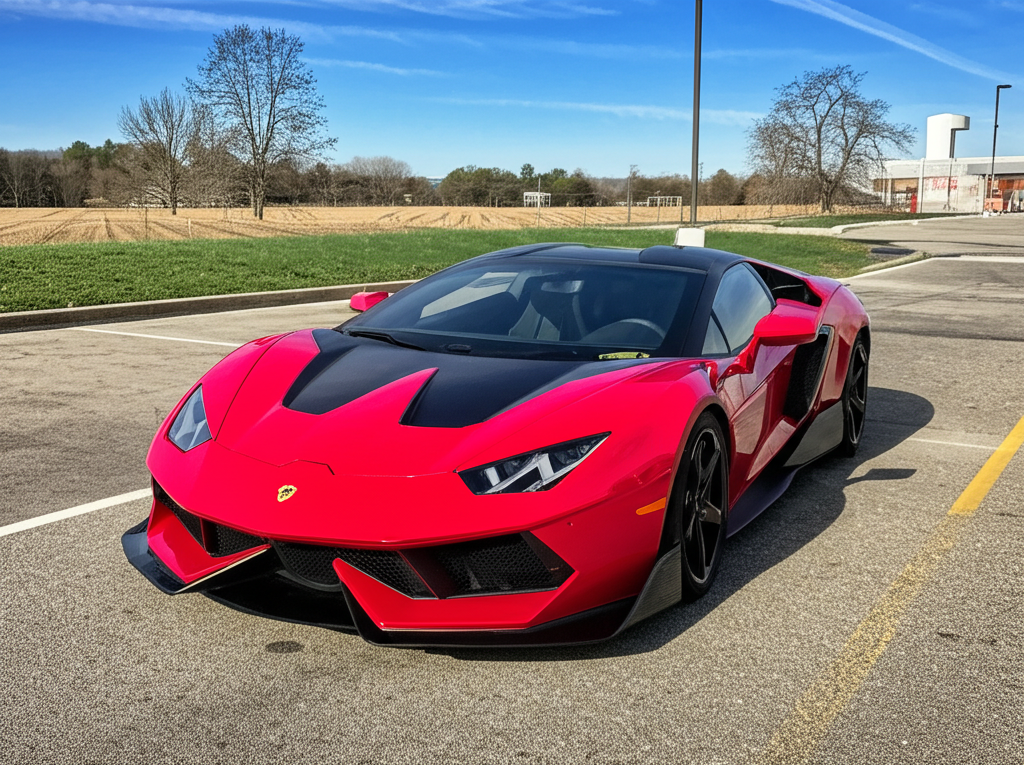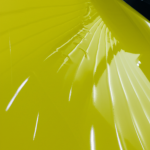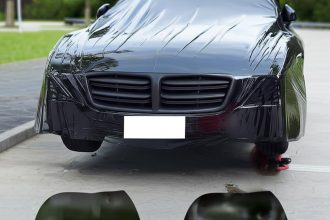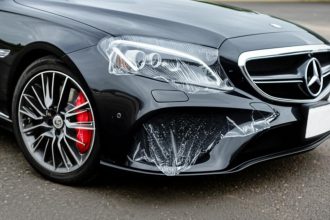There’s a specific, sickening sound every car owner in Thailand dreads: the unmistakable scrape of paint against concrete, another vehicle, or some unseen hazard. Your heart sinks. You get out, inspect the damage, and the frustration mounts. It might be a minor scuff or a deeper gouge, but the thought process is often the same: “How much will this cost to fix?” Then comes the quote, perhaps something like ฿1500 or more just for a panel touch-up or repaint, and you feel that sting – not just on your car, but in your wallet. It feels like throwing money away, especially knowing Bangkok traffic or tight parking spaces mean it could easily happen again next week. If this sounds painfully familiar, you’re likely wondering if there’s a better, more cost-effective, and perhaps even more stylish way to deal with these inevitable cosmetic battle scars. Could car wrapping be the answer you’re looking for?
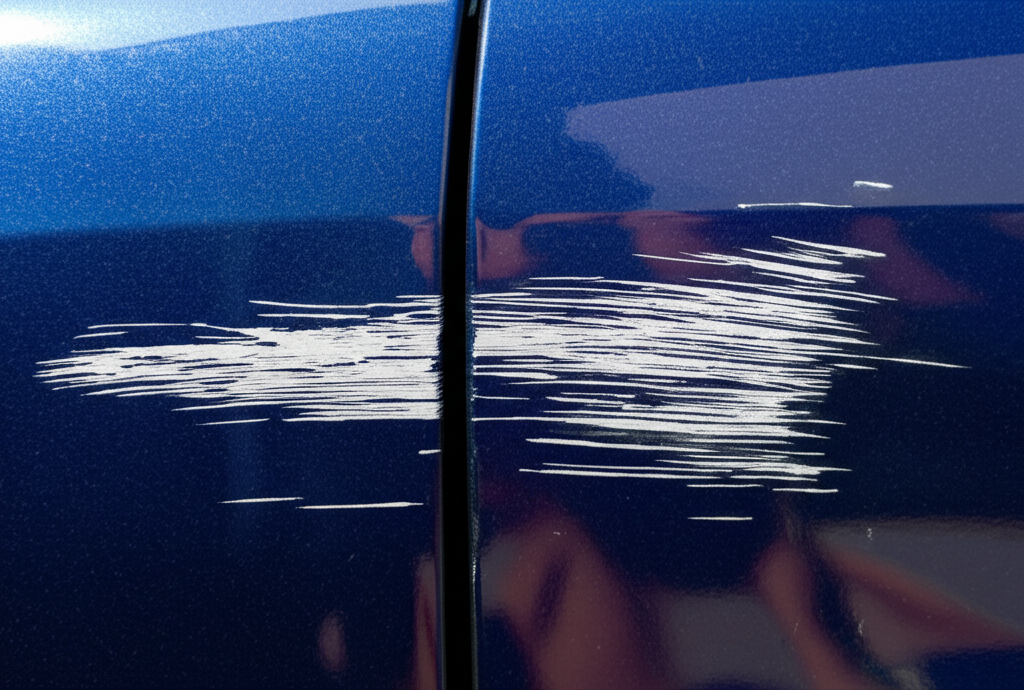
From Repaint Resignation to Wrapped Revelation: Meet Anan
Let’s talk about Anan, a marketing executive navigating the bustling streets of Bangkok daily in his Honda Civic. Like many, Anan loved his car but was constantly battling minor scratches and swirl marks. “It felt like every few months, there was something new,” he recalls. “A brush in a tight soi, a careless motorcycle Bumper tag in traffic, a mystery scratch in the condo parking lot. Each time, it meant a trip to the body shop and another few thousand Baht for a repaint that never *quite* matched perfectly after a while.”
His breaking point came after paying nearly ฿2000 to fix a scratch on his rear bumper, only to have a similar one appear on the door less than a month later. “I was just so tired of the cycle, the cost, and the worry,” Anan says. That’s when a colleague, whose car always looked immaculate despite the city grind, mentioned car wrapping. Intrigued, Anan did some research. He learned that a quality vinyl wrap wouldn’t just cover existing minor imperfections (after proper surface preparation, of course), but would actively protect the original paint underneath from new scratches, stone chips, UV damage, and environmental contaminants.
Anan decided to take the plunge. He chose a stylish satin black wrap, transforming the look of his Civic completely. The process took a few days at a professional wrapping shop. “The initial cost was definitely more than a single panel repaint,” he admits, “around ฿35,000 for the whole car. But the change was incredible. Not only did my car look brand new and unique, but the peace of mind was immediate.” Months later, after a minor parking scuff that would have previously sent him straight to the painter, he was relieved. “It marked the wrap slightly, but the paint underneath was perfect. The wrap shop could even replace just that damaged section of vinyl relatively affordably if I wanted, far cheaper than a repaint. More importantly, small daily wear and tear? It just doesn’t show like it did on the paint. For me, considering how often I faced minor damage, wrapping feels like it will save me money and stress in the long run.”
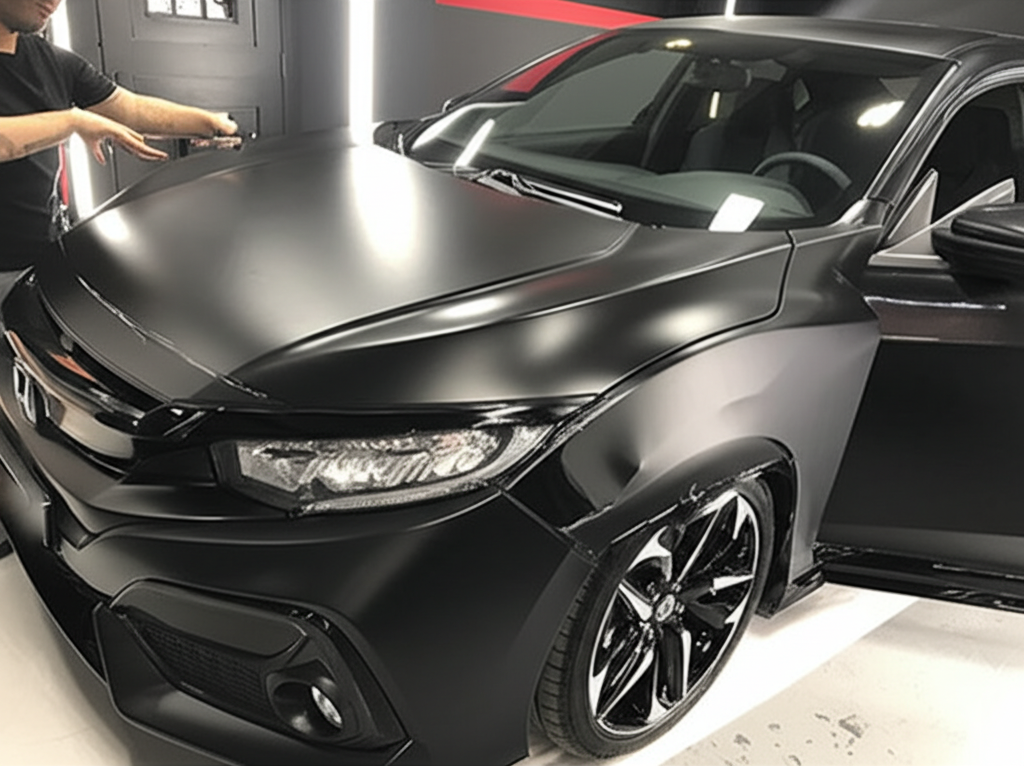
Wrapping vs. Repainting: The Head-to-Head Comparison
So, you’ve just got a scratch. Do you opt for a traditional repaint or consider a vehicle wrap? Both have their place, but they serve different primary purposes and come with different cost structures and benefits, especially relevant in the Thai context. Let’s break down the key differences:
| Feature | Car Wrapping (Vinyl Film) | Traditional Repainting |
|---|---|---|
| Primary Function | Protection of underlying paint, Customization/Style Change, Covering minor existing flaws (after prep). | Repairing damage (scratches, dents, rust), Restoring original look, Full color change (major job). |
| Cost Structure | Higher initial investment (e.g., ฿30,000 – ฿70,000+ for full car in Thailand depending on size/film). Potentially lower long-term cost by preventing multiple repaint jobs. Panel replacement possible. | Lower cost per incident for minor repairs (e.g., ฿1500 – ฿5000+ per panel). Can become very expensive with multiple incidents or full resprays (฿40,000 – ฿100,000+). |
| Protection Level | Excellent against minor scratches, stone chips, swirl marks, UV rays, bird droppings. Sacrificial layer protects original paint. | Offers no inherent protection beyond the paint layer itself, which is vulnerable to scratches and environmental damage. |
| Durability / Lifespan | Typically 3-7 years with good quality film and proper care (Thai sun can reduce lifespan vs. cooler climates). Removable. | Can last the lifetime of the car if well-maintained, but susceptible to damage throughout. Quality of aftermarket repaint can vary. |
| Repairability | Damaged panels can often be re-wrapped individually, usually cheaper than repainting the same panel. Minor marks may self-heal on some films. | Requires sanding, priming, painting, clear coating. Color matching can be challenging, especially on older or faded paint. Blending often needed. |
| Customization Options | Vast range of colors, finishes (matte, satin, gloss, chrome, textured), patterns, and printable graphics. Easily reversible. | Limited by available paint codes unless opting for expensive custom paint jobs. Permanent change. |
| Impact on Resale Value | Can preserve or even increase resale value by protecting the pristine original paint underneath. Easily removed before sale if desired. | Non-factory repaints, especially full resprays or poorly matched panels, can potentially lower resale value as buyers may suspect hidden damage. |
| Application Time | Typically 2-5 days for a full car wrap, depending on complexity and vehicle size. | Panel repair: 1-3 days. Full repaint: 1-3 weeks or more, depending on prep work and shop schedule. |
| Best Suited For | Protecting new or good condition paint, frequent drivers in high-risk areas (city traffic, tight parking), owners wanting a style change without permanent commitment, covering minor existing paint flaws. | Fixing significant damage (deep scratches, dents, rust), restoring a classic car to original specs, owners who prefer the look/feel of factory paint and accept the risk of damage. |
Voices from the Road: Relief and Satisfaction
The frustration of that ฿1500+ repaint bill is real, but the relief found in wrapping is equally tangible for many Thai drivers:
“After my third minor repaint in a year on my Fortuner, I switched to a wrap. Best decision ever. I chose a cool matte military green. It looks tough, and now I don’t flinch every time I park near a motorcycle taxi stand. The peace of mind is worth every Baht.” – Mr. Chatri, Toyota Fortuner owner
“My Mazda 3’s soul red paint was beautiful but showed every tiny swirl mark from washing. I got a clear protective wrap (PPF) on the front and a gloss black wrap on the roof. It still looks stunning, but now washing is stress-free, and the front end is safe from stone chips on the highway.” – Ms. Pim, Mazda 3 owner
“I calculated what I spent on touch-ups over two years… it was almost half the cost of the wrap I eventually got for my Yaris. The wrap looks amazing, completely changed the car’s vibe, and I know the original white paint underneath is staying perfect for when I sell it.” – Mr. Vee, Toyota Yaris owner
Tired of Repaint Bills? Explore Your Wrapping Options!
That fresh scratch might feel like bad luck now, but perhaps it’s the perfect trigger to consider a smarter, long-term solution. If you’re tired of the cycle of damage, repair costs, and worry, car wrapping offers a compelling alternative. It’s not just about changing the color; it’s about investing in protection, preserving your car’s value, and gaining peace of mind on Thailand’s challenging roads.
Ready to stop dreading scratches and start enjoying a protected, personalized ride? Learn more about the high-quality wrapping films, color options, and professional installation services available right here in Thailand. Get a personalized quote and discover how wrapping can transform your driving experience.
📱 Want to learn more about car wrap & paint protection?
Feel free to reach us on LINE:

🌐 Official Website: https://tpuwraps.com
Frequently Asked Questions (FAQ)
- Q: Can a car wrap hide existing deep scratches or dents?
- A: Vinyl wraps are thin films and will conform to the surface underneath. While they can cover very minor imperfections or swirl marks, deeper scratches, rock chips, or dents will still be visible through the wrap. For the best result, significant paint damage should be professionally repaired and the surface properly prepped *before* wrapping.
- Q: How much does it really cost to wrap a car in Thailand?
- A: Prices vary widely based on car size (e.g., sedan vs. SUV), complexity of the vehicle’s shape, type and brand of vinyl film chosen (standard gloss/matte vs. chrome, textured, or paint protection film), and the reputation/skill of the installer. Expect ranges from roughly ฿30,000 for a small car with standard film up to ฿70,000+ or even ฿100,000+ for larger vehicles, premium films (like PPF), or complex designs.
- Q: Will wrapping damage my car’s original paint?
- A: When high-quality vinyl wrap film (from reputable brands like 3M, Avery Dennison, etc.) is applied and removed correctly by experienced professionals, it should not damage the underlying factory paint. In fact, it protects it. Issues usually arise from using cheap, low-quality films or improper removal techniques (e.g., using excessive heat or pulling incorrectly), which can lift paint or leave adhesive residue.
- Q: How long does a car wrap typically last in the hot Thai climate?
- A: While manufacturers often quote 5-7 years or more, the intense UV radiation and heat in Thailand can shorten the lifespan of a wrap compared to cooler climates. Realistically, expect a quality wrap to look good and perform well for 3-5 years with proper care (regular washing, avoiding harsh chemicals, parking in shade when possible). Premium Paint Protection Films (PPF) often last longer.
- Q: How do I care for a wrapped car? Can I still wash it?
- A: Yes, you can and should wash a wrapped car regularly. Hand washing is generally recommended using pH-neutral soap. Avoid automatic car washes with harsh brushes. High-pressure washing should be done carefully, keeping the nozzle at a distance and avoiding direct spray on wrap edges or seams. Specific matte or satin wrap cleaners are available. Avoid waxing standard gloss wraps with carnauba waxes; use synthetic spray sealants instead. Matte/satin wraps should not be polished or waxed as it can create shiny spots.
Beyond the Scratch: An Investment in Your Drive
That initial scratch hurts, there’s no denying it. But instead of just patching the problem with another costly repaint, consider it an opportunity. An opportunity to upgrade your car’s protection, enhance its style, and potentially save yourself money and hassle in the long run. Car wrapping isn’t just a cosmetic fix; it’s a proactive shield for your automotive investment and a way to express your personal style on the roads of Thailand.
Think about the relief of shrugging off minor scuffs, the joy of a fresh new look, and the satisfaction of knowing your original paint is preserved underneath. Maybe that scratch wasn’t just bad luck; maybe it was the push you needed to discover the smarter choice.
